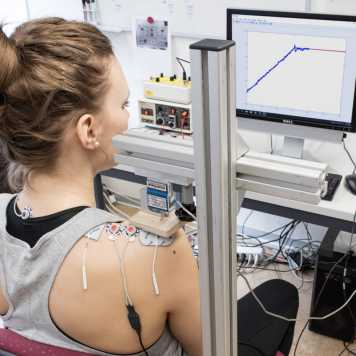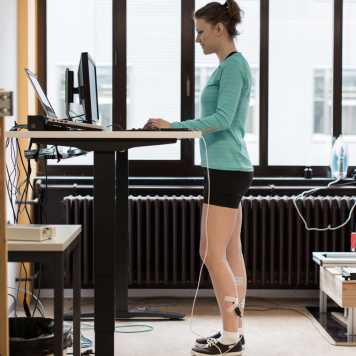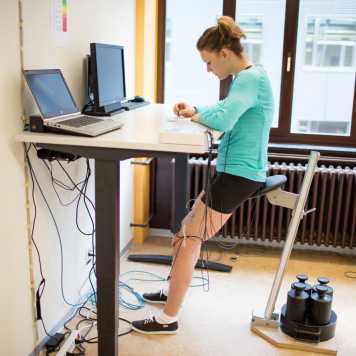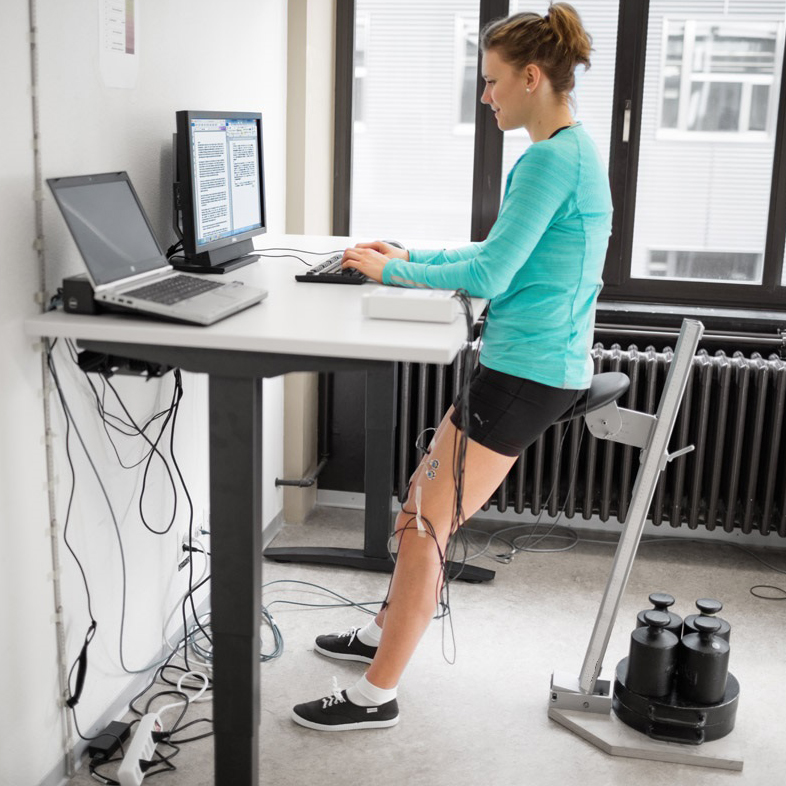Muscle Fatigue at Work
Musculoskeletal pain is prevalent and often it is work-related. Musculoskeletal disorders may be linked not only to heavy work but also to one-sided loads such as prolonged standing or sitting, constrained postures and repetitive movements. To ascertain healthy and productive work, adequate rest schedules and optimal work organizations should be developed and muscle fatigue should be prevented.
Our research is guided by the hypothesis that any kind of muscle strain at work must be followed by adequate rest periods in order to prevent adverse health effects. High definition surface electromyography and electrical stimulation allow measuring muscle fatigue, which is known to be a precursor of work-related musculoskeletal disorders. Optimal sit-stand-rest schedules and sit-stand-walk schedules should be developed and muscle fatigue should be prevented.
Subprojects
Neck Muscle Fatigue after Prolonged Computer Work

Neck pain is one of the most common health problems in the working population. Depending on the profession, up to more than 50% of the workers suffer from neck pain. The mechanism leading to this high amount of neck pain is still not known.
More about Neck Muscle Fatigue after Prolonged Computer Work
Effects of Prolonged Standing Work on Lower-Leg Muscle Fatigue

Working in a standing posture is very common in workplaces. Prolonged standing work is known to induce discomfort and the resulting muscle fatigue is associated with different health disorders, such as back pain, even in the absence of load manipulation. The purpose of this research project is to better understand fatigue and muscle twitch force reduction related to standing work activities and its potential implications to work related health problems. For prevention adequate work-rest schedules are developed.
More about Effects of Prolonged Standing Work on Lower-Leg Muscle Fatigue
Standing Aids for Sit-Stand Workplaces

Day-long sitting has been linked with several health risks and an increased mortality by several studies. A possible solution to reduce sitting time as well as to alleviate the strain of standing could be a standing aid. The aim of this study is to compare leg and lower back muscle activity, heart rate, work performance and subjects’ discomfort while working with a standing aid, standing, and sitting and to get first hints for the development of a new standing aid system.
